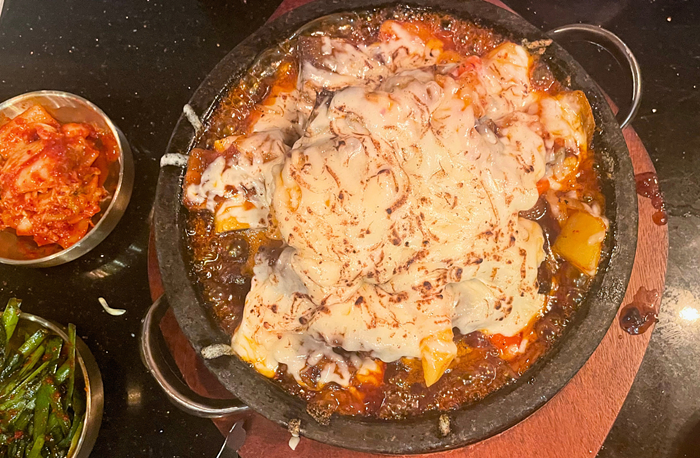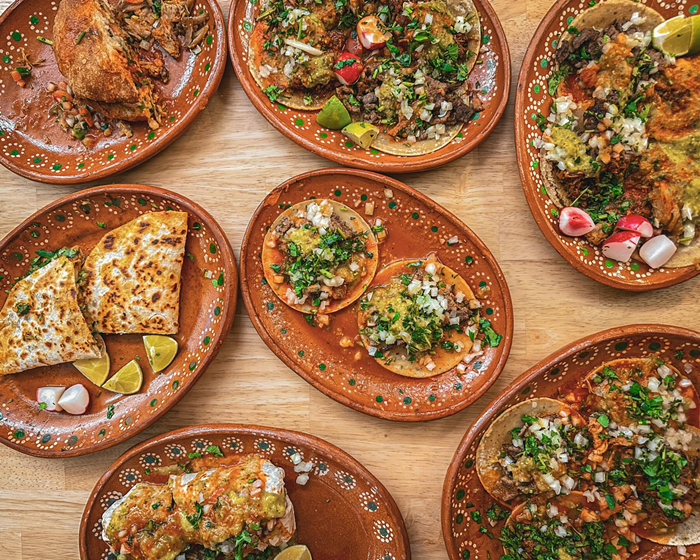Jack's Tapas Cafe (Mainly Chinese) is perhaps the greatest restaurant name in Seattle. It becomes all the more likeable when you learn that this cafe serves no coffee and their tapas plates are the size of most other restaurants' entrées. It moves to fully loveable when you realize that there's no irony or camp intended by the name; this is a full-on ESL problem. The restaurant's command of the language is further demonstrated in the one descriptive note in the menu, and here I decide I want to marry whomever is writing their copy: "We cook to your desire as name your dish." Jack's, the project of chef Jack Tai and his extended family, is one of the finest new Asian restaurants in Seattle, a city that doesn't suffer from a lack of fine Asian restaurants.
Chef Tai's fusion of neighboring cuisines is subtle, a mélange of his native Taiwan and the cuisines of northern and western China. The resultant mix of dishes, and types of dishes, seems wholly foreign to the average diner and wholly intuitive to the chef. The firm hand he shows in spicing, assembly, and conception is all the more impressive for the unpretentiousness of the dining room. The lighting seems to be original to the building (not quite new but not quite old), but is at least incandescent and dim enough to not feel sterile or oppressive. The walls are a boring ruddy gold, but are at least freshly painted and clean. The chairs are cheap and neon green, but are at least new and all match. There are no tablecloths but the tables are clean. The dining room is perfectly casual, considered, and intentional without being pretentious or showy.
The Szechuan Style Pickles ($2.95) is a pile of pickled cabbage, sitting innocently, monochromatically, unaccompanied on a small plate, visually conveying a simplicity that's immediately countered on your tongue. There's a puckeringly strong vinegar element that's offset by a rich sweetness, a bit of ginger-driven bitterness, a woodsy spice note, and finally a high floral note (the chef refuses to disclose his brine's secrets, but our guess for the last was orange-blossom water). Such an intriguingly complex dish, masquerading as a simple plate of cabbage.
I've never eaten bread like the northern Chinese Sesame and Scallion Layered Bread ($8.95). And I do love the breads. The balance of crispy sesame seed–encrusted exterior and soft, gooey interior is interesting. But the strong simplicity of the flavors, the fresh scallion folded into the dough, and the almost cheesy richness at the center brings it home. It's intended in the same way as Ethiopian injera or Indian nan, as a platform for the other dishes on the table (rice isn't native to northern China, and wheat-based breads there take the place of the steamed rice we're all used to as a Szechuan food platform). But my companions and I raced through a half loaf of the stuff without any accompaniment.
There's (at least) one dish on the Jack's menu that was absolutely transporting, which proved food's ability to convey imagery, narrative, setting, and drama on the stage that is the human palate. It's called Mixed Vegetables, Chicken, Translucent Noodles with Golden Crown ($9.95), and eating it reminds one of walking up to a burned-out wooden barn on a drizzly morning from a hundred yards away. There's a whiff of smoke in the air at the periphery, a sweetness and wetness, a periodic richness getting more frequent as you step—bite—your way closer to the center. The chicken and vegetables you pass along the way are whispering gossip about the smoky dark richness at the center of the plate. As you arrive at the center, wading through the wet char of the old barn, the translucent noodles explode their sweet smokiness onto your tongue. The "Golden Crown" is a plain egg omelet blanketing the dish, forcing the diner to eat from the periphery to the center, experiencing the dish narratively.
I'm only halfway joking when I tell you not to go to Jack's. Chef Tai and an assistant are the only two working in the small kitchen, and our waitress warned us that if we come in and see the dining room full, we should be ready to wait a while for our food. So stay away. Because I'm going to wait as long as it takes to eat more of this fascinating menu. And I'd rather not have to wait long.


















